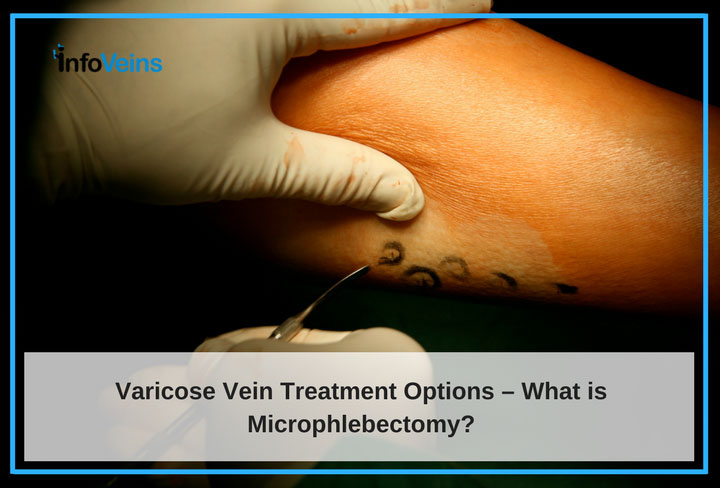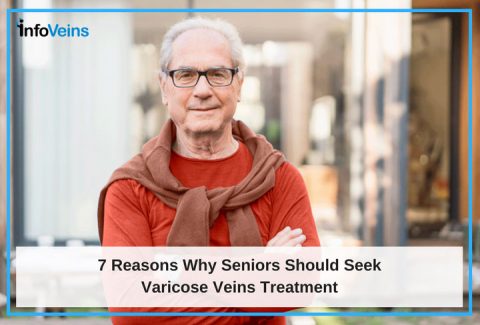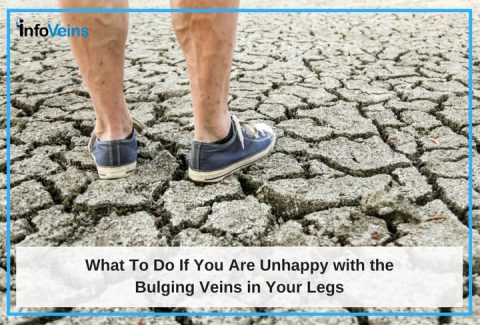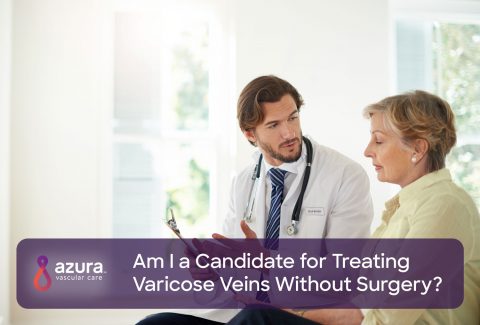
Are you wondering if there’s a way to get rid of your painful varicose veins? If so, you’re not alone. About 30% of adults have varicose veins, and many of them are hoping to find relief from the uncomfortable symptoms that often come from these bulging veins in legs. i
Understanding Varicose Veins
The twisted, blue, bulging veins on your legs are caused by one-way valves in your veins that are not working properly. When these valves begin to fail, blood flows backwards. Increased blood in the veins puts stress on the vein walls, which may already be weak, and the vein stretches.
While you may not like how your legs look, how your legs feel may be more important when you think about considering treatments. You may have a serious varicose vein condition requiring a vascular specialist’s attention if you are experiencing any of the following symptoms in your legs:
- Throbbing or burning
- Swelling
- Heaviness, discomfort or pain
- Thickening or changes in the color of the skin
- A sore that is not healing
- Previous blood clots
- Problems with bleeding that’s difficult to stop
A vascular specialist can help determine the severity of your varicose vein condition and provide treatment options, including minimally invasive microphlebectomy.
What is Microphlebectomy?
Not long ago, surgery was the only treatment option, but now, minimally invasive procedures can be just as, if not more, effective than surgery for the treatment of varicose veins.ii If you’re looking for an alternative to surgery to treat your varicose veins, you may be a candidate for microphlebectomy.
Microphlebectomy, also known as ambulatory phlebectomy, is the removal of varicose veins in the leg without surgery. Veins are flexible and collapse easily, and even some large veins can be removed through small nicks in the skin. Microphlebectomy is often done to complement endovenous laser ablation and radiofrequency ablation. Microphlebectomy can not only offer symptomatic relief, but also help make you feel more comfortable in the appearance of your legs.
The Microphlebectomy Procedure
Microphlebectomy is usually done in a doctor’s office. Your doctor will review your medical history, medications, use of supplements and any medication allergies. You should wear loose fitting clothing on the day of your treatment. Here is what you can expect:
- The area around the vein will be cleaned and sterilized
- A local anesthetic will be injected around the vein
- Once the area is numb, a series of small nicks are made in the skin around the vein
- A special instrument with a hook on it is inserted through the incision, and used to remove the varicose veins
- You should not need stitches – small bandages will be placed over the nicks when the procedure is completeiii
The procedure should take 30 minutes to 1 hour. Afterwards, your leg will be wrapped, and within 24 hours you can be back to your normal activities. You will need to wear compression stockings for 2 – 3 weeks after the procedure, and you should avoid strenuous exercise for 2 weeks.iii
Microphlebectomy Benefits
Microphlebectomy is an effective treatment for superficial varicose veins, which are veins that are just under the surface skin, with a success rate of more than 90%.iii The veins are removed without the need for stitches. Microphlebectomy has a lower varicose vein recurrence rate than sclerotherapy:
- 2% recurrence rate for microphlebectomy one year after treatment
- 25% recurrence rate for sclerotherapy one year after treatment iv
Microphlebectomy Risks
All treatments for varicose veins come with some risk. The main risks of microphlebectomy are:
- Increased risk for infection
- A permanent change in the color of the skiniii
Rare complications following microphlebectomy may include:
- Bleeding
- Bruising, or a hematoma, which is a collection of blood under the skin
- Numbness and tingling i
Who Should Not Have Microphlebectomy?
As with all varicose veins treatments, it’s not a one size fits all treatment option. Microphlebectomy may not work for all kinds of varicose veins, and only a vascular specialist can tell you if it’s a good option for you. If you are pregnant, you should talk to your doctor. You should not have microphlebectomy if:
- You have an active skin infection
- You have an active blood clot
Varicose Vein Treatment Options – What You Need to Know
Before having microphlebectomy, or any other surgical or minimally invasive treatment, you may want to first try some of the following lifestyle changes. Keep in mind that many insurance plans will want you to attempt these non-invasive solutions before they will cover more aggressive options. You should check with your insurance provider to fully understand your plan and benefits.
These simple lifestyle changes may bring you some relief, but keep in mind, it may not be enough. You can try to:
- Elevate your legs up, 4 times a day, for 30 minutes
- Exercise
- Lose weight if you’re overweight or obese
- Purchase and wear compression stockings i
If you are considering treatment for your varicose veins, request an appointment with a vascular specialist to discuss your medical history and the condition of your legs to see if you are a good candidate for microphlebectomy, with or without endovenous treatment, might be helpful for you.
Sources:
iLin, F., Zhang, S., Sun, Y., Ren, S., Liu, P., The Management of Varicose Veins. Int Surg, 2015. 100: p. 185-189. https://www.ncbi.nlm.nih.gov/pmc/articles/PMC4301287/
iiSpinedi, L., Uthoff, H., Partovi, S., Staub, D. Varicosities of the lower extremity, new approaches: cosmetic or therapeutic needs? Swiss Med Wkly, 2016. 146:214360 http://www.smw.ch/scripts/stream_pdf.php?doi=smw-2016-14360
iiiRadiologyinfo.org, Phlebectomy of Varicose Veins. http://www.radiologyinfo.org/en/info.cfm?pg=Phlebectomy (reviewed 4/13/2016, accessed 12/8/2016)
ivWittens, C., et al., Editor’s Choice – Management of Chronic Venous Disease, Clinical Practice Guidelines of the European Society for Vascular Surgery. Eur J Vasc Endovasc Surg, 2015. 49: p. 678-737. http://www.ejves.com/article/S1078-5884(15)00097-0/pdf


